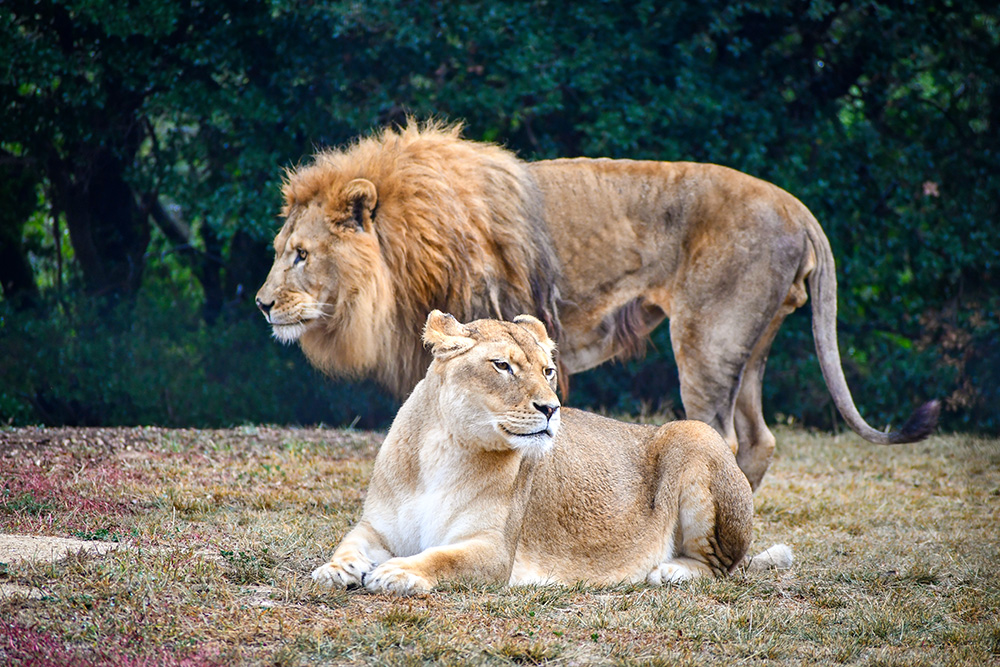We have visited several zoos and animal parks, featuring them on our blog: the Paris Zoo, La Bourbansais Zoo in Brittany, and, most recently, Marwell Zoo in England. Last October, we had the chance to explore the largest (and most splendid!) zoo in Provence. In this article, I want to share our experiences at La Barben Zoo with you.
🎦 Watch our short video on La Barben Zoo, which will inspire you to explore this fascinating site in Provence ⤵
After the good days, the rain!
We visited La Barben Zoo in mid-October. Until then, we had been enjoying three weeks of unbroken fine weather. However, the inevitable happened – the sun gave way to rain, coinciding with our zoo visit!
Fortunately, the rain didn't persist the entire day. By around 1 pm, it had stopped, making our exploration of the animal park much more pleasant... and dry!
Our October visit turned out to be delightful. The rain, which had cooled the atmosphere, enabled us to see many animals. It just goes to show that sometimes, rain can be a blessing in disguise!
Before presenting the photos from our visit, let's delve a bit into the mission of the animal park.
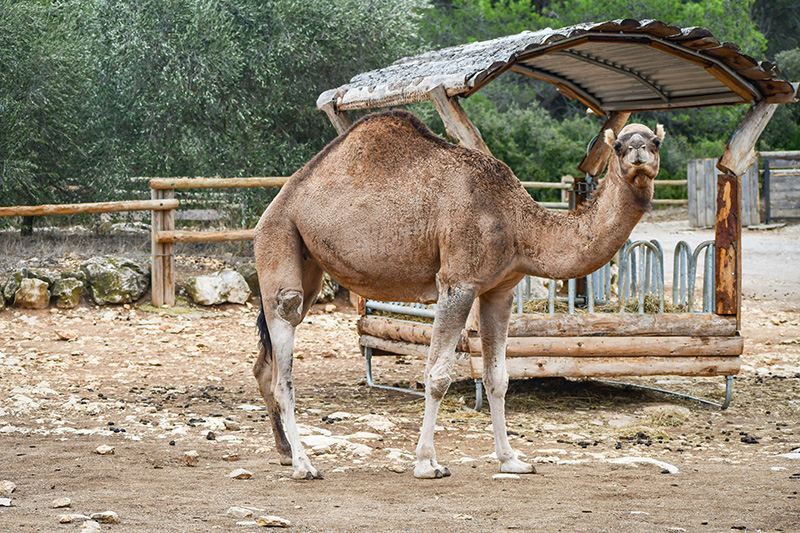
A camel
About La Barben Zoo
La Barben Zoo is located not far from Salon-en-Provence in the Bouches-du-Rhône département.
The park is home to some 830 animals of 157 species, including 23 in EEP (European breeding programmes). 98% of the zoo's animals were born in captivity and are exchanged between zoos.

An Ural owl
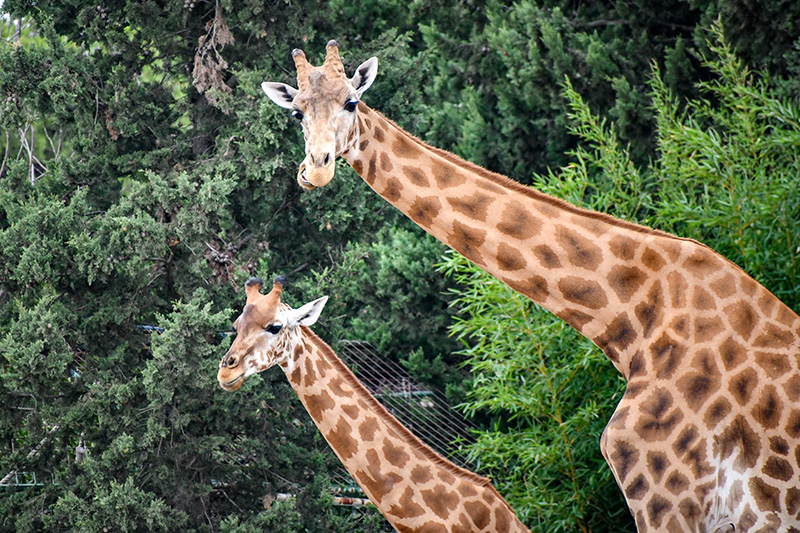
The giraffes
The zoo's grounds cover 33 hectares and include 9 km of footpaths (so you'd better take good shoes to visit).
Open since 1970, La Barben attracts over 300,000 visitors a year, including 13,000 schoolchildren.
The site employs 50 permanent staff, including 15 animal carers, to look after them all.
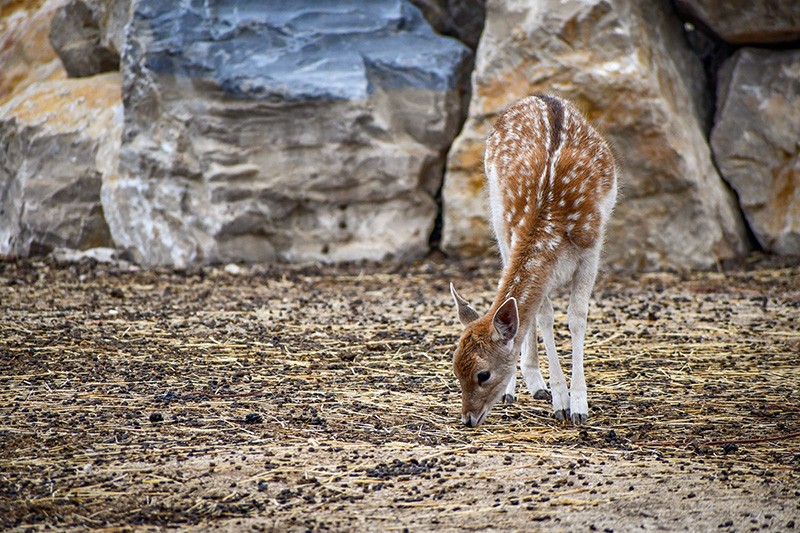
A young deer
Raising awareness of the animal kingdom
Like the zoos we've already visited (such as Marwell Zoo in England), La Barben is a special meeting place for man and animals. It helps to raise awareness of our environment and invites us to :
- discover little-known animals
- learn to love and respect them
- understand the threats they face and the importance of protecting them.
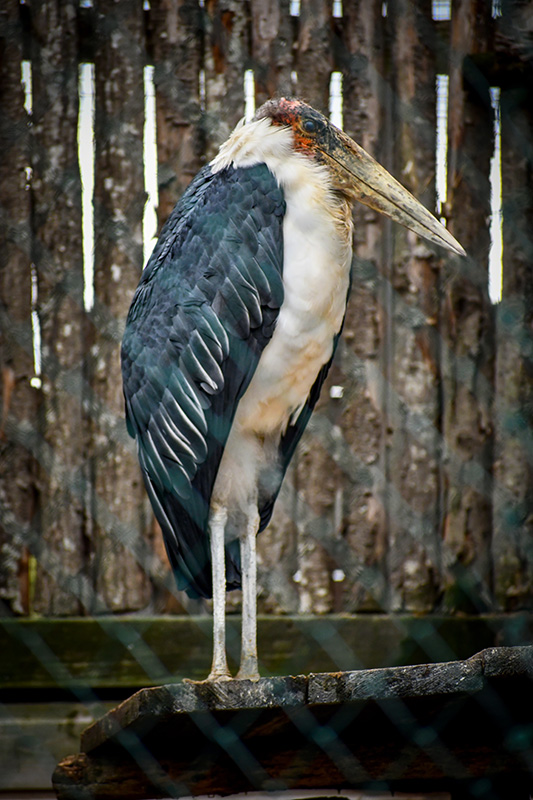
An African marabout

A linx
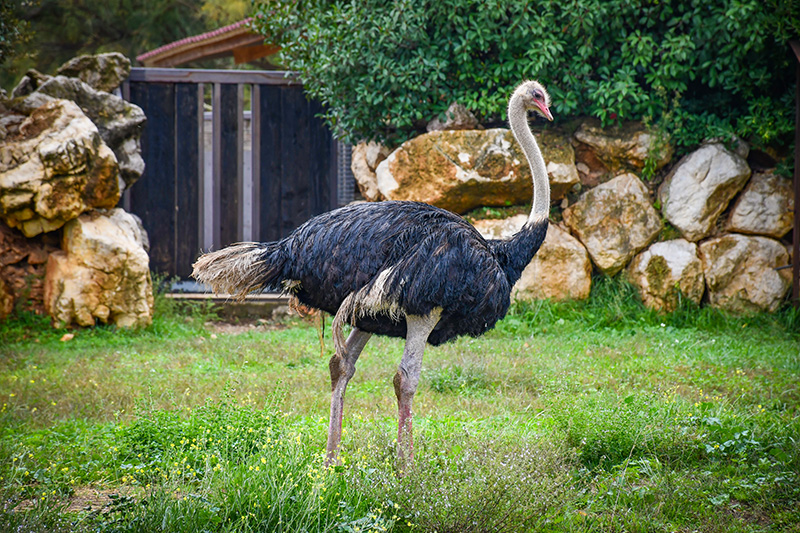
An ostrich
At the bedside of the animal kingdom
Every day, the zoo's passionate teams devote themselves to caring for their residents and preserving biodiversity. Their actions include:
- Introducing visitors to the diversity of the animal world and raising awareness of environmental protection,
- Continuously improving the living conditions of the animals,
- Active involvement in species conservation, both within the zoo and in the wild.
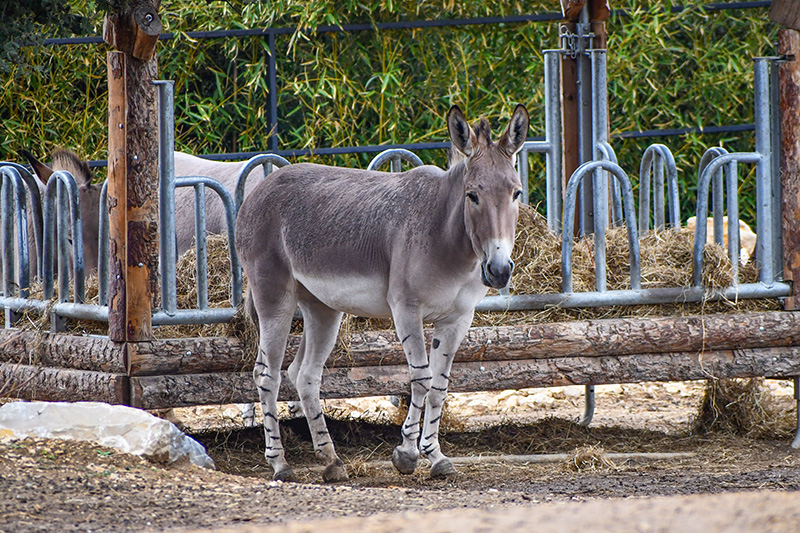
A Somalia donkey
In addition, the park often acts as a refuge for animals rescued from difficult situations (I'll talk more about this later in the article), and offers a serene retirement to former laboratory or circus residents.
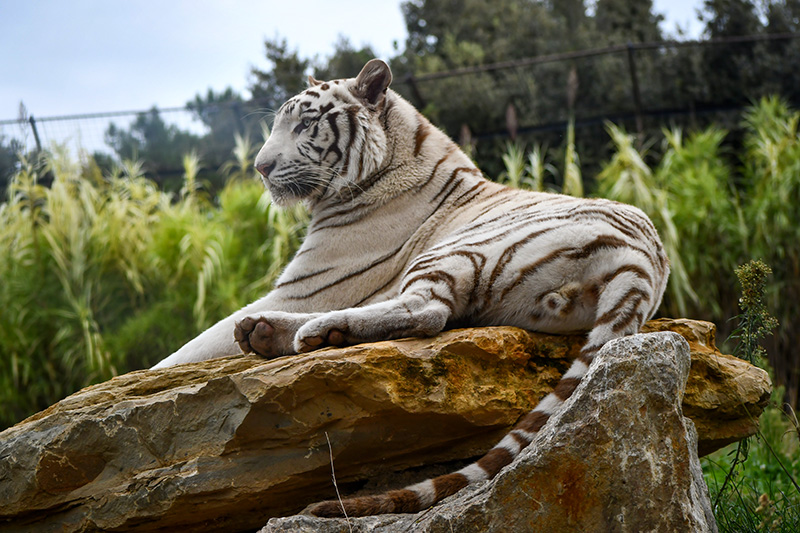
A white tiger
Our visit to La Barben Zoo
It was a threatening morning in mid-October, so there weren't many visitors! After going to reception to pick up our tickets, we walked through the iron gates, map of the park in hand.

The entrance
At the entrance to the park, there are two routes to choose from:
- a rather steep stone staircase with 150 steps
- a flatter path that is better suited to families (and pushchairs!). We chose the latter (and ended our visit by descending the famous staircase).

The steep stone staircase
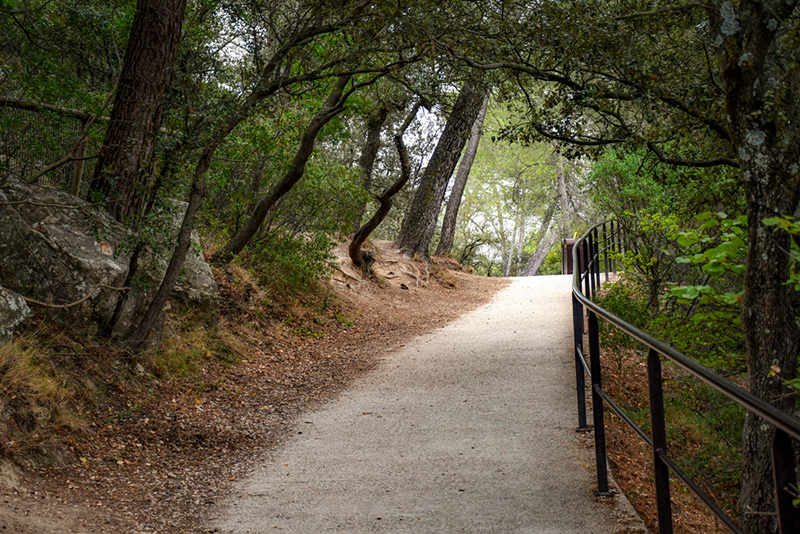
A section of the route that avoids the stone steps
We wandered along the 9 km of trails to discover the animals, the vast majority of which we could see.
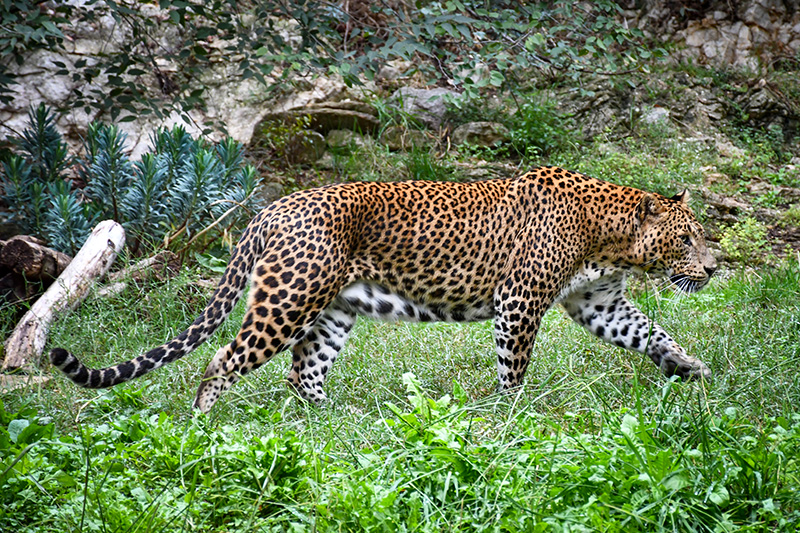
A panther

A fennec
Our favourite animals
Here are some of our favourites:
Red panda
Native to the Himalayas (Nepal, Burma, India and China), the Red Panda is distinct from the Giant Panda. It takes its name from the Nepalese word "Ponya", which means bamboo eater. This unique mammal is not closely related to raccoons or bears, although it does share some similarities with them. In fact, it is the only member of the Ailuridae family.
These creatures are particularly well adapted to arboreal life, moving nimbly through the trees. Their long tails act as a pendulum, while their inward-pointing legs make it easier to move around branches.
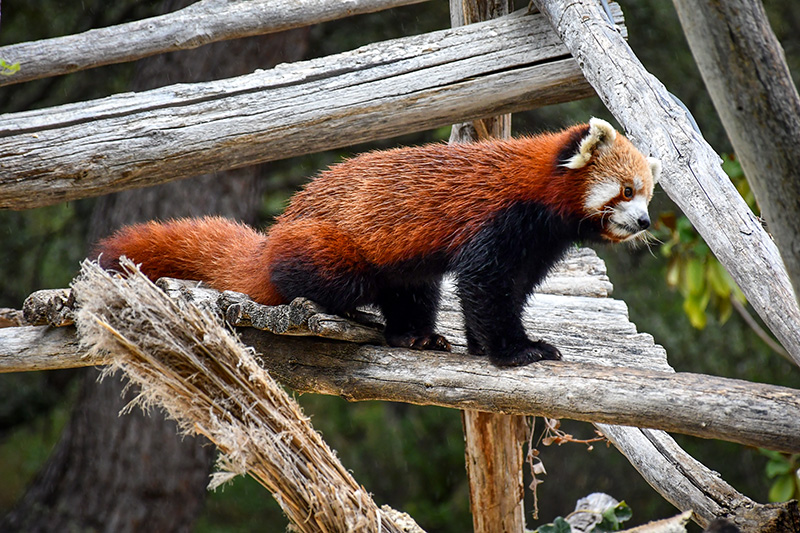
Barbary sheep
Barbary sheep, native to the arid mountains of the Sahara, are remarkably well adapted to life in dry climatic conditions. They excel at navigating steep, rocky terrain. These animals are distinguished by their double mane, which extends over the neck and shoulders as well as the throat and front legs, giving them the appearance of having a beard. In males, the impressive horns can measure up to 80 cm, while in females, they are generally shorter, not exceeding 40 cm.
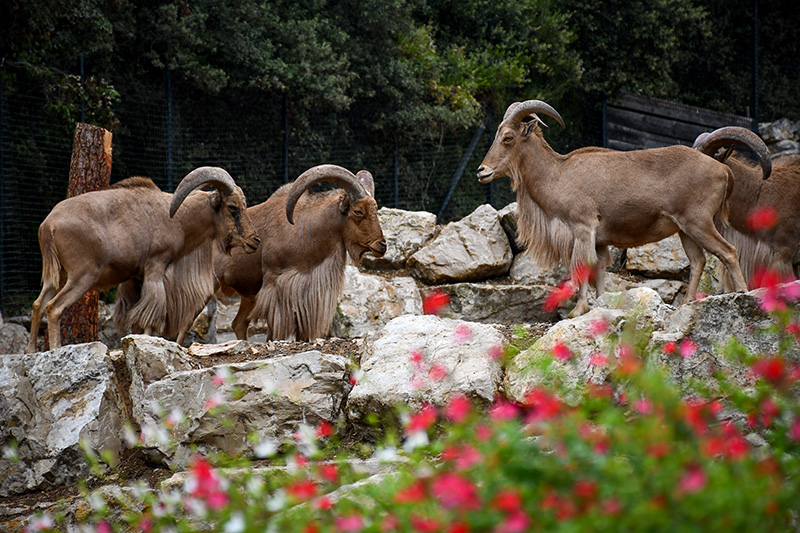

Giraffe
Giraffes, symbolic of the African savannah, whether in the west, east or south of the continent, can reach an impressive size of 5.5 metres. Their remarkable features include legs that measure up to 2 metres and a tongue that exceeds 40 cm. Their gestation period lasts 14 months. Each giraffe is also unique because of its distinct spots, which make it possible to identify each individual in a specific way.


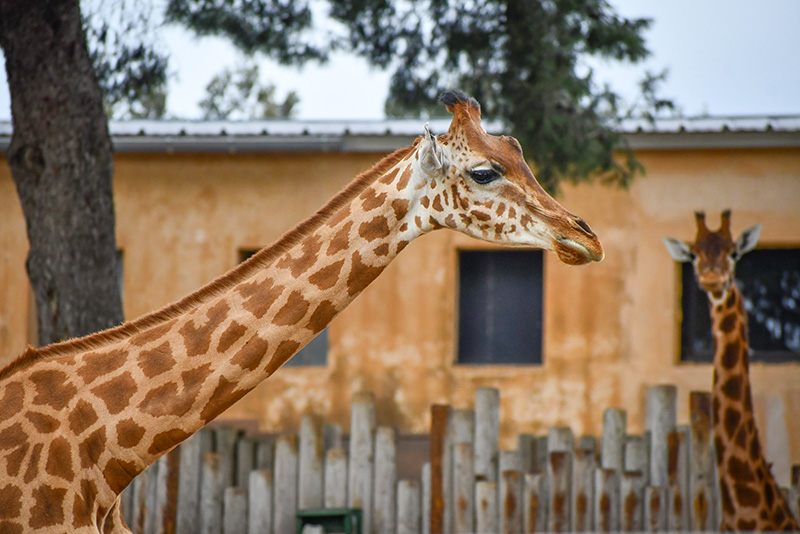
Asian elephant
Elephants are the heaviest land mammals, weighing up to 5 tonnes for the Asian species and 7 tonnes for the African species. At birth, a baby elephant weighs around 100 kg.
These animals are distinguished by their unique trunk, highly developed brains and remarkable memory. They eat between 150 and 260 kg of vegetation daily and drink up to 100 litres of water.
However, elephants are seriously threatened by poaching for their tusks and the destruction of their habitat.
La Barben Zoo is home to Dora, a visually impaired female elephant. Her inability to live with other elephants has led the park to close its doors to them. Fortunately, Dora is well cared for and no longer shows any signs of ill-being, thanks to the constant attention of her carers.
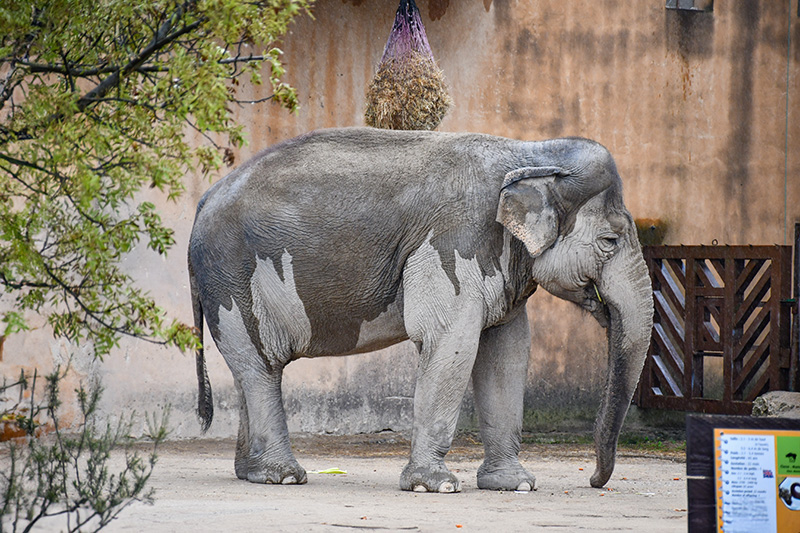
African or Asian elephant?
While admiring the park's elephant, we asked ourselves the question: what are the physical differences between an African elephant and an Asian elephant?
Here's the answer:
- African elephants have much larger ears than their Asian cousins.
- African elephants have two protuberances at the end of their trunks, while Asian elephants have only one.
- The African elephant has a hollow back, unlike the rounded back of the Asian elephant.
- The African elephant has one hump on its head, while the Asian elephant has two.
- All African elephants have tusks, but only some Asian elephants have them.
- The African elephant has 4 or 5 toes on the front legs and 3 on the back, while the Asian elephant has 5 on the front and back.
- The Asian elephant has more hair than its African counterpart.

Alpaca
Today, alpacas, mainly reared in the Andes, adapt well to the lack of oxygen at altitude thanks to a high concentration of red blood cells in their blood. Slightly smaller than llamas, they provide meat, skin, dung (used as fuel and fertiliser) and, above all, high-quality wool. Their soft, warm and hardwearing wool is among the finest in the world and was once reserved for Inca royalty. Domesticated for 6,000 years, alpacas are no longer found in the wild.
At La Barben Zoo, alpacas live alongside tapirs and capybaras, other species native to South America.

Lion
The adult lion, large and powerful, has no natural predators apart from man, and is capable of killing prey much larger than itself, such as young rhinos. Its roar, audible up to 5 km away, is used to mark its territory, communicate with its pride and express its aggression towards rival lions. Although it adapts to a variety of habitats, the lion avoids deserts and dense forests.
Unique among felines, the king of animals lives in a group, made up of a male, several females and their cubs, each with a specific role. Lions have become rare and are threatened by hunting and the loss of their habitat and prey.
At La Barben animal park, a pair of lions live according to a rhythm close to that of African life, active mainly at the beginning and end of the day to avoid the heat.
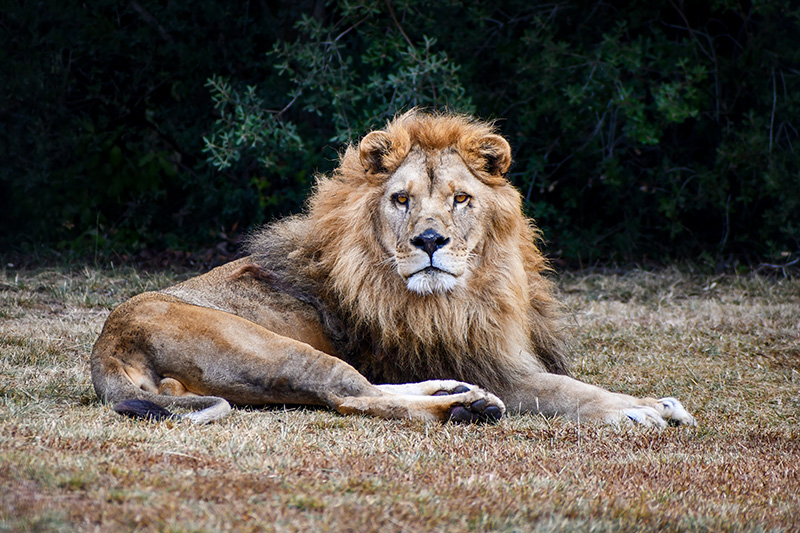
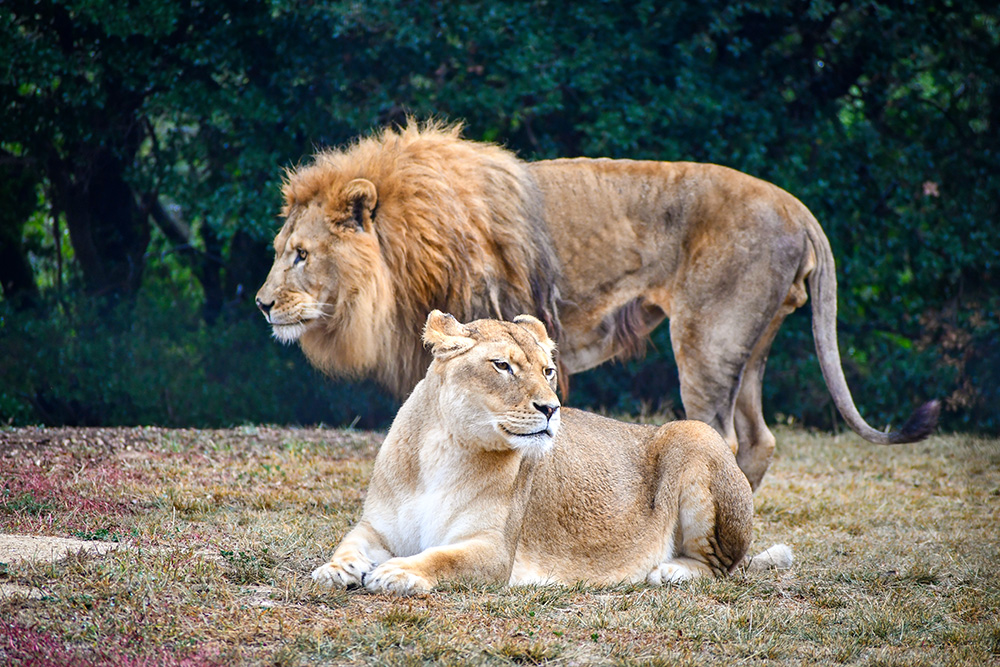
Cheetah
The cheetah, found in Algeria, Sub-Saharan Africa and Iran, is recognised as the fastest land animal, capable of reaching speeds of 115 km/h thanks to its specialised anatomy. Its slender body, strong heart, large lungs and long tail enable it to maintain its balance at high speed. Its semi-retractable claws and rough paw pads increase its grip.
However, it can only maintain this speed over short distances, as its body quickly reaches critical temperatures. In comparison, Usain Bolt, the fastest man alive, reached 44.7 km/h.
At La Barben zoo, we were able to observe a brotherhood of four cheetahs in an environment specially designed for them, where they like to rest in the shade and play frequently.
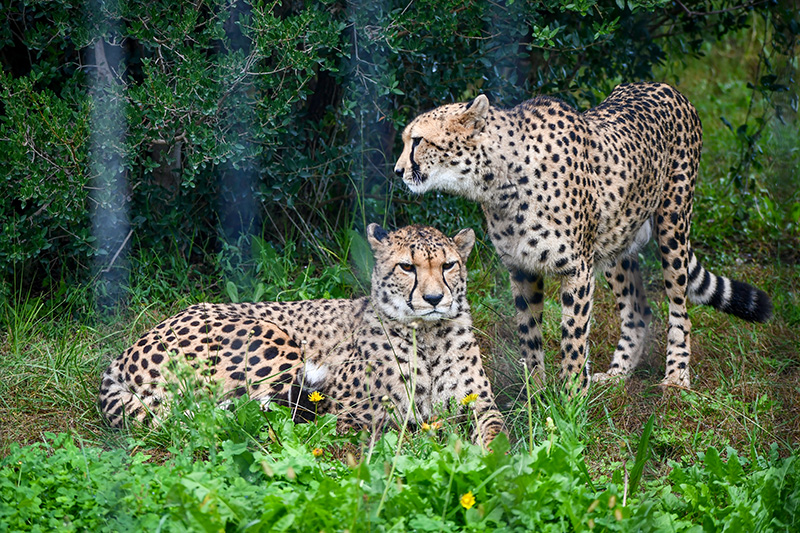

White rhinoceros
Weighing over 3 tonnes, the white rhinoceros is one of the heaviest land mammals, living mainly in the wooded savannahs from Kenya to South Africa. Although it appears calm, it can charge at an astonishing speed of over 40 km/h if threatened.
Unfortunately, these animals are seriously threatened by poaching, mainly for their horns, which are coveted in traditional Chinese medicine. Without intervention, they could become extinct in the wild within the next 15 years.
At La Barben zoo, three white rhinos share their habitat with blue wildebeest, beisa oryx and ostriches, offering a unique opportunity to observe them, particularly during their rest periods or mud baths.
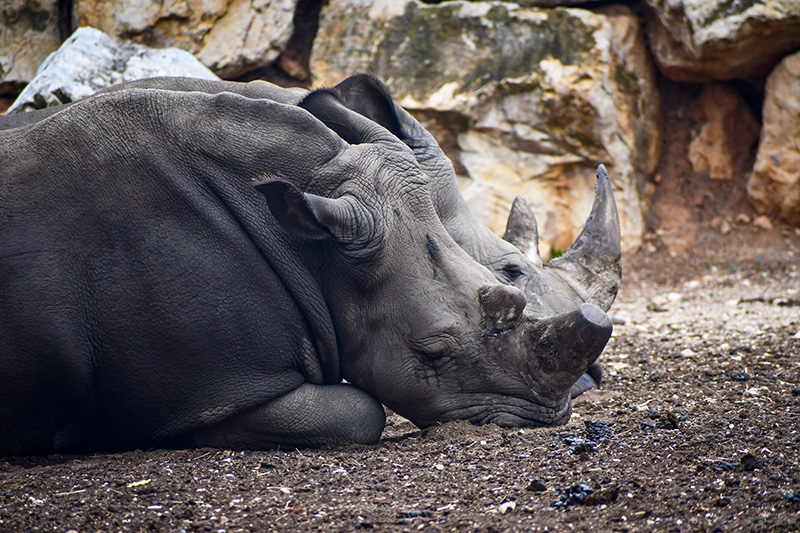
Meerkat
The meerkat, often called the "sentinel of the desert", belongs to the mongoose family and is active during the day. Its coat is predominantly blond, with dark stripes down its back and a very agile tail. It has excellent eyesight, and the dark hair around its eyes protects it from the sun.
This small carnivore, measuring between 25 and 29 cm, is renowned for its watchful behaviour. One member of the group is always on the alert to warn the others of any danger.
Meerkats are also known for their love of digging, hunting, playing and grooming each other.
At La Barben zoo, we observed a group of four meerkats, often busy digging in the sand or building new tunnels.
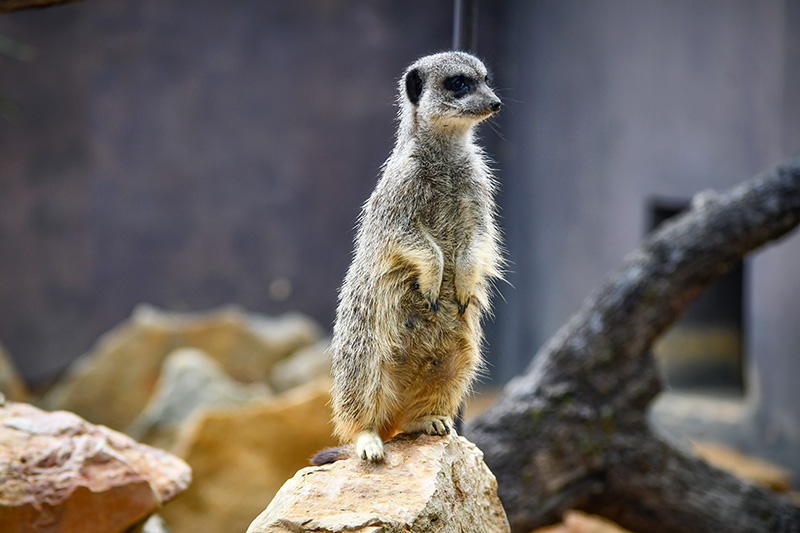
Hippopotamus
The hippopotamus, which inhabits the lakes, rivers and swamps of sub-Saharan Africa, is one of the most massive animals, weighing up to 4.5 tonnes.
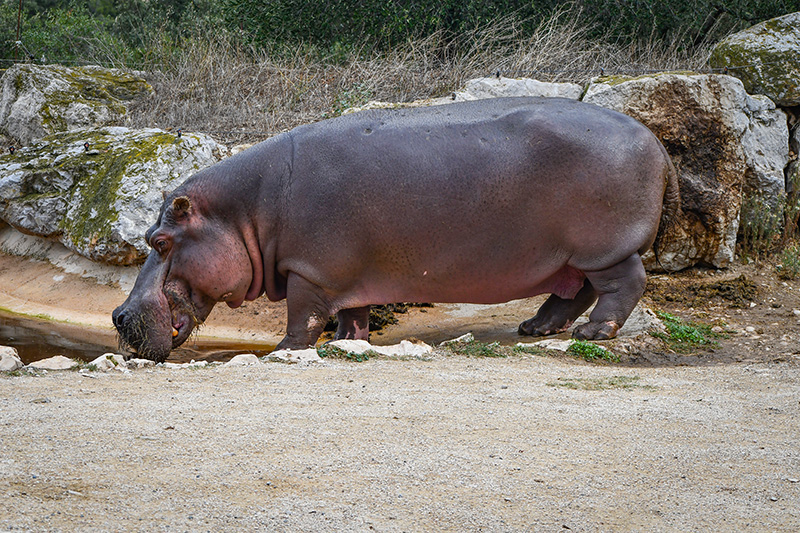
This herbivore leads an amphibious life, spending its days in the water to protect itself from the sun and emerging at night to feed. It is adapted to this life with eyes and nostrils on the top of its skull and webbed toes. Despite its herbivorous diet, it can be dangerous and will charge if it feels threatened.
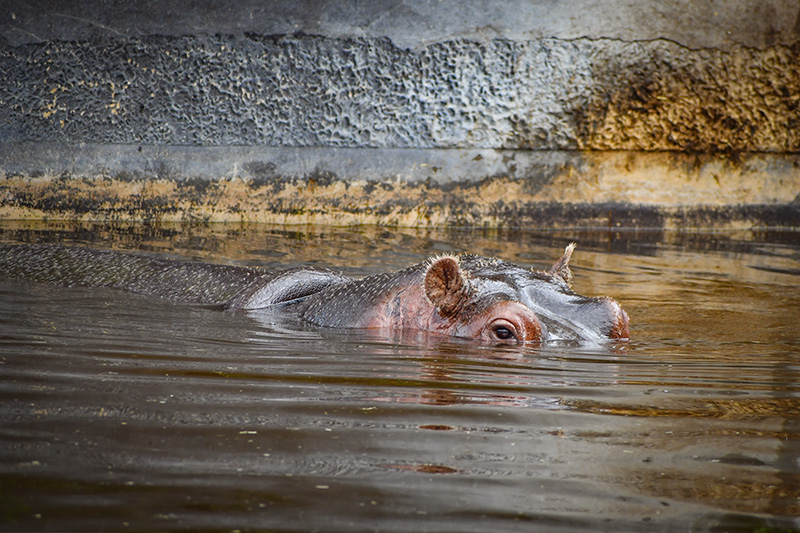
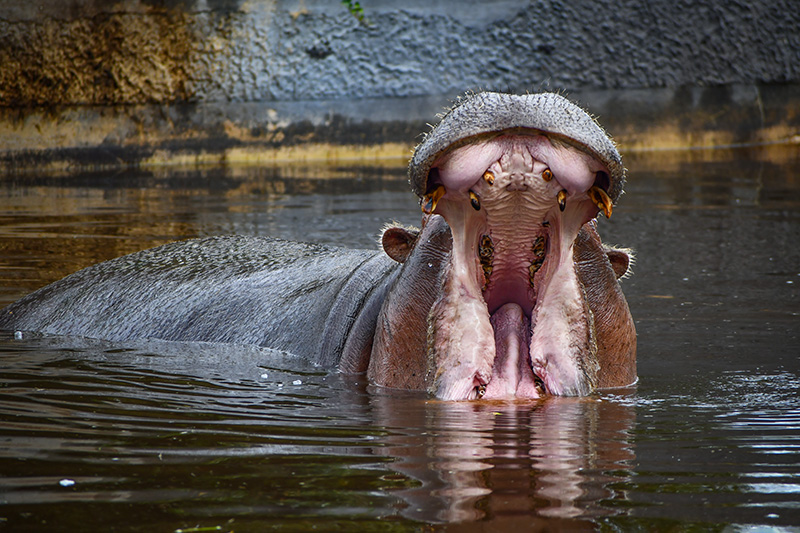
At La Barben zoo, we had to be patient to catch a glimpse of the hippopotamus couple (they can remain in apnea for up to 5 minutes).
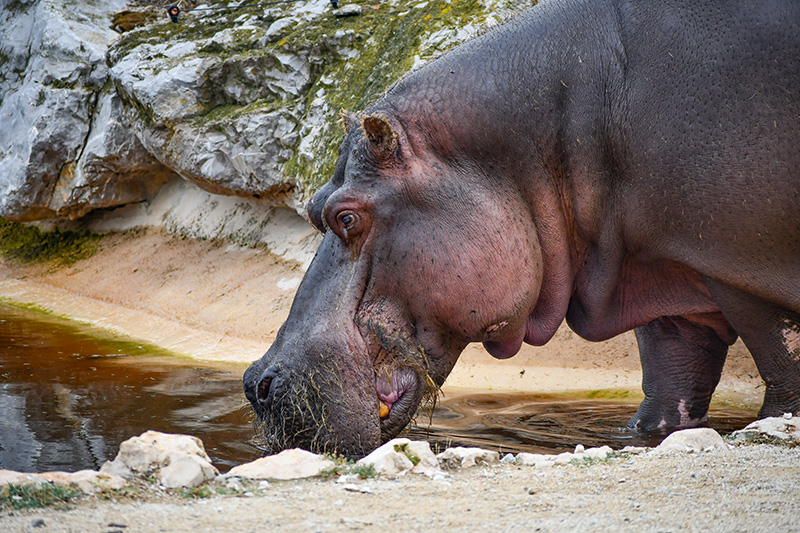
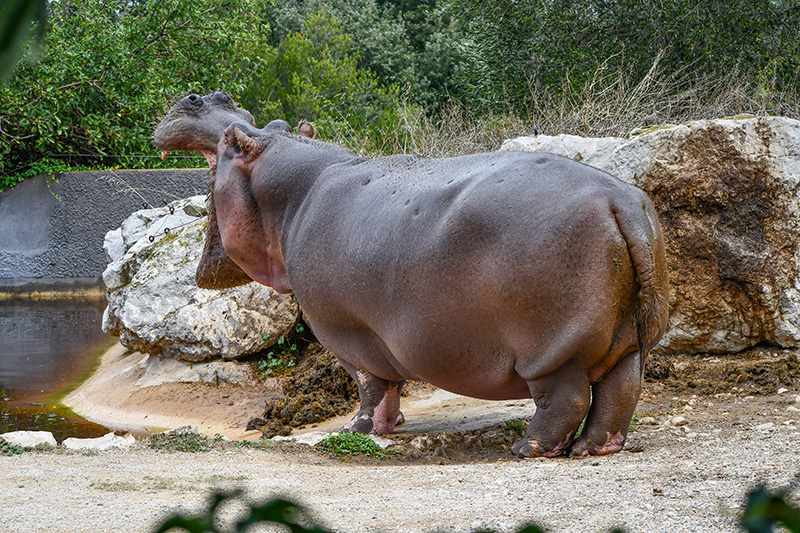
European wolf
The European wolf, a carnivore, adapts its diet to the size of its pack. Small groups hunt deer, roe deer and wild boar, while lone grey wolves may feed on smaller prey such as marmots, hares, foxes and even berries such as bilberries and cranberries.
Wolves use a variety of vocalizations to communicate: growling, barking, moaning, but howling remains their main means of communication to maintain cohesion and warn of danger.
Once ubiquitous in mainland France, wolves disappeared from the territory over the course of the 19th and 20th centuries, mainly as a result of hunting, motivated by fear and mistaken beliefs. The last wolf of French origin was shot in 1937 in the Limousin region.
However, thanks to the expansion of Italian populations, the wolf has reappeared in France. In September 2023, the Office Français de la Biodiversité counted 1,104 wolves. Their return has given rise to heated debate between farmers, hunters and biodiversity conservationists.
At the La Barben park, a pack of wolves is evolving in a new 3,800 m² wooded area, and it was easy for us to catch a glimpse of them.
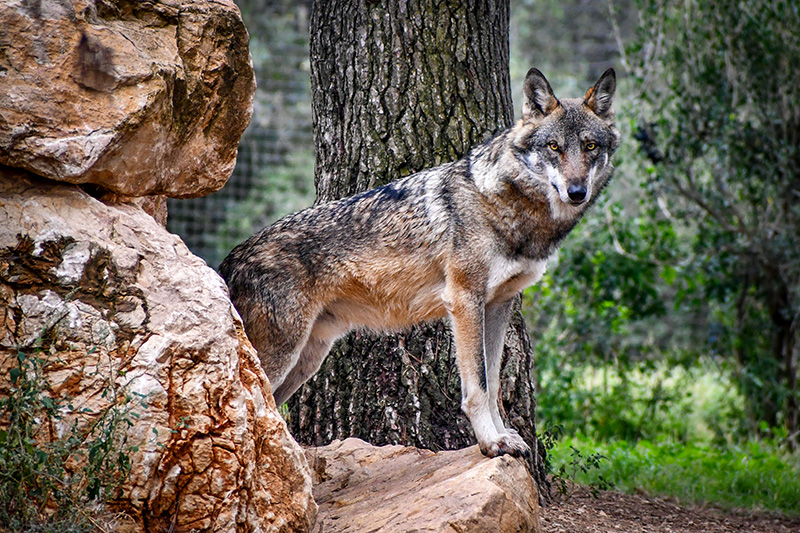
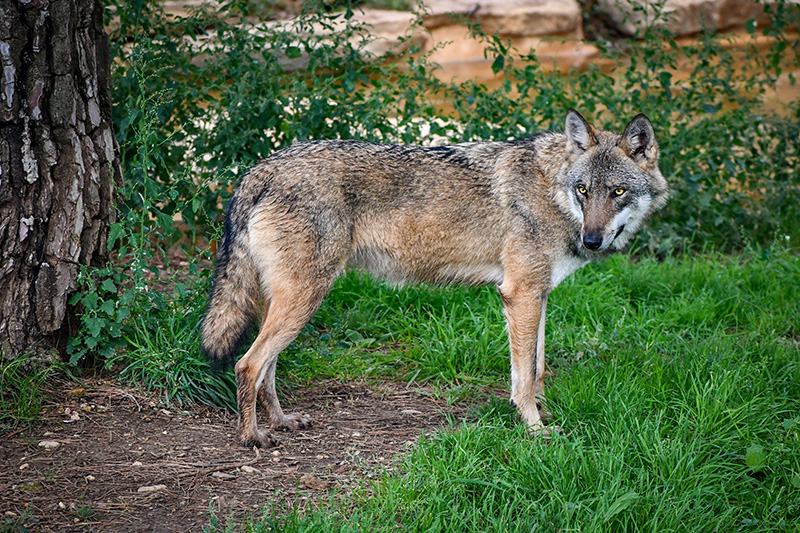
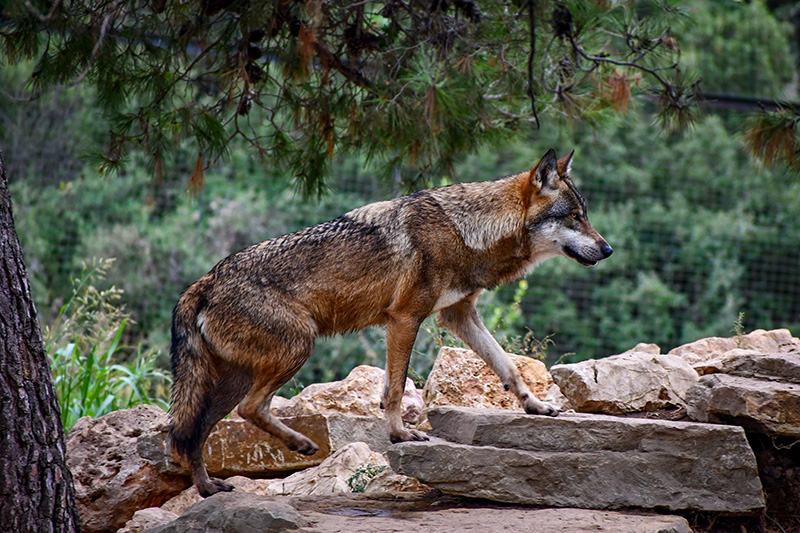
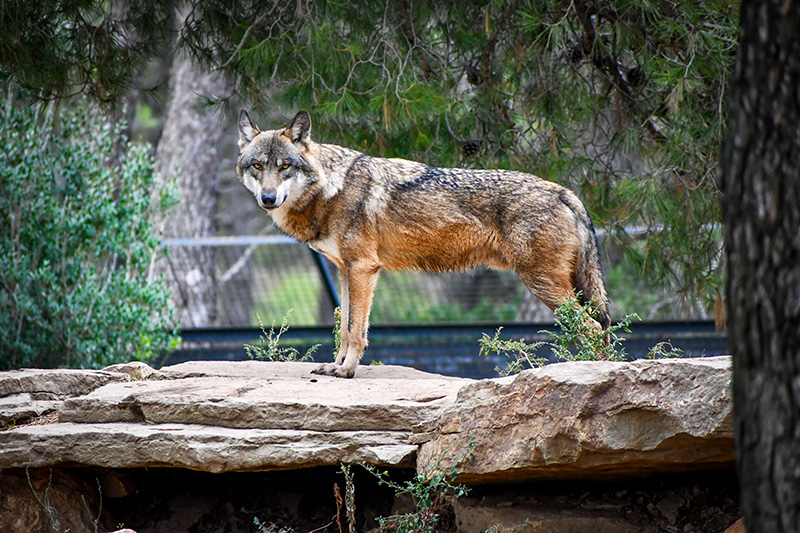
Siberian and White tigers
Measuring up to 3 metres long and weighing 300 kg, the tiger is the largest of all felines. Powerful and majestic, it can leap up to 10 metres. Since 2020, the tigers at La Barben zoo have been enjoying a new 4,000 m² area designed especially for them. You might even be lucky enough to see them swimming in their underwater viewing pool!
The zoo is home to two female Siberian tigers, Alena and Zarina, born in 2018 at Dublin Zoo and transferred to La Barben as part of a European Breeding Programme (EEP).
Tsagan, a young male white tiger born in 2019, was entrusted to the zoo after being seized by French customs. His integration is delicate due to his human imprint.


To manage their cohabitation, the female Siberian tigresses occupy the park in the morning, while the white tiger has access to it in the afternoon. During our afternoon visit to the enclosure, we were able to observe Tsagan, while the two female Siberian tigers rested in their cave.

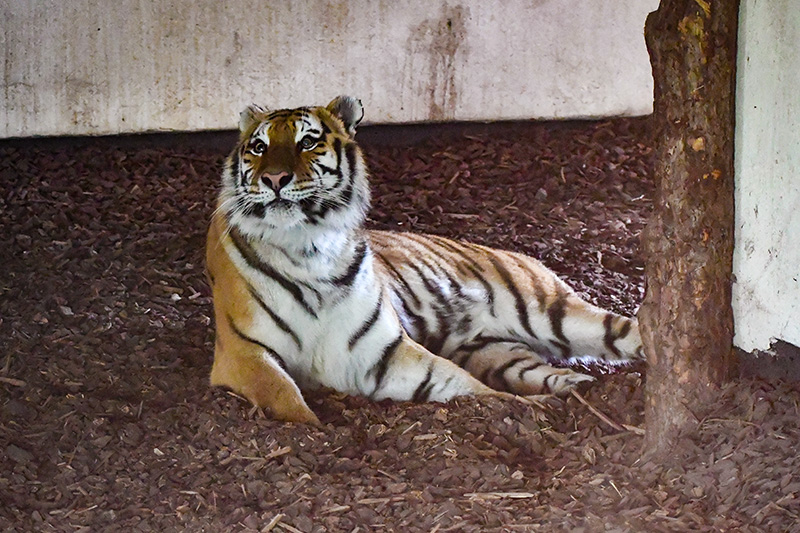
The vivarium
When you leave the animal park, don't miss a visit to the vivarium. In winter, the transition to the warmth of the vivarium is so striking that you won't be able to keep your coats on! The vivarium is home to several fascinating reptiles, including a Nile crocodile, a caiman, a royal python and tortoises, all of which are impressive to watch.
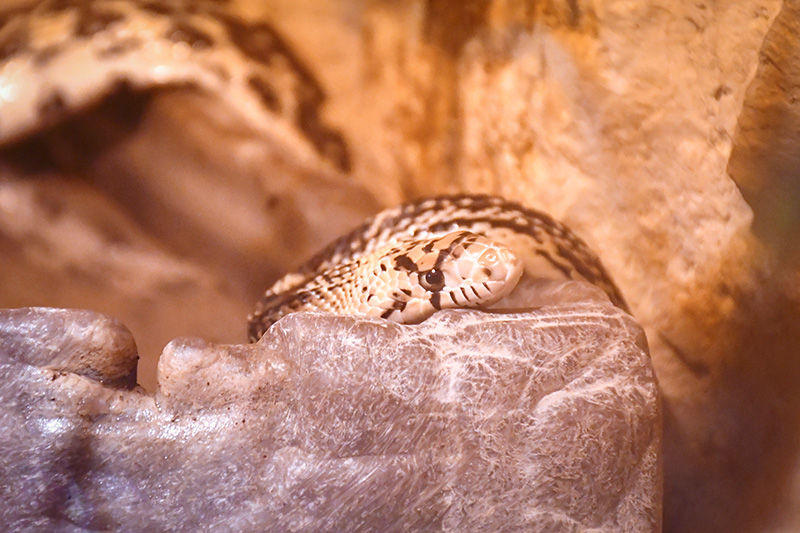
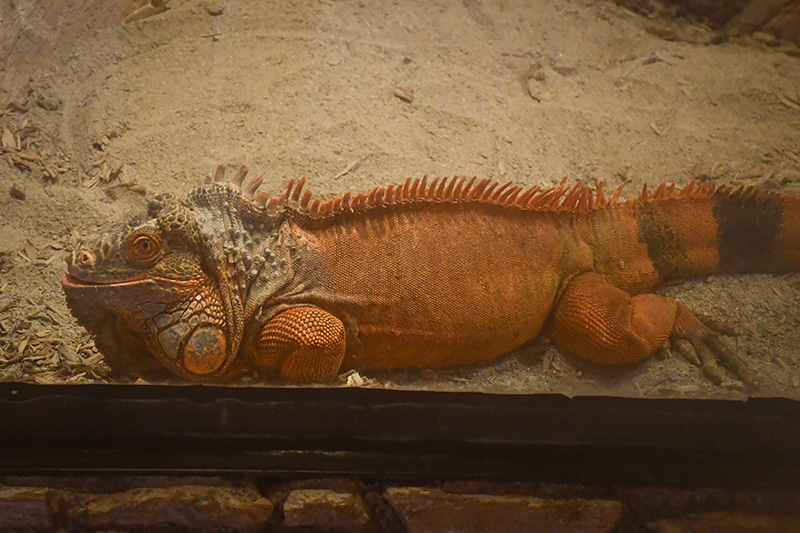
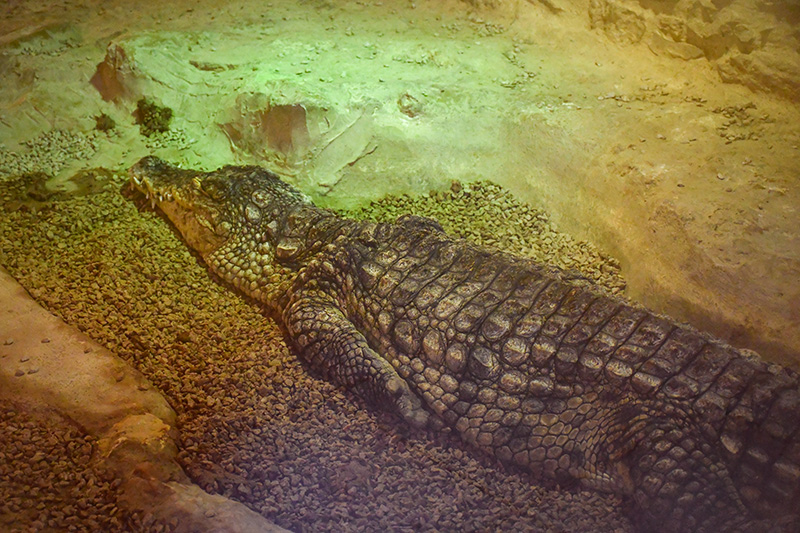

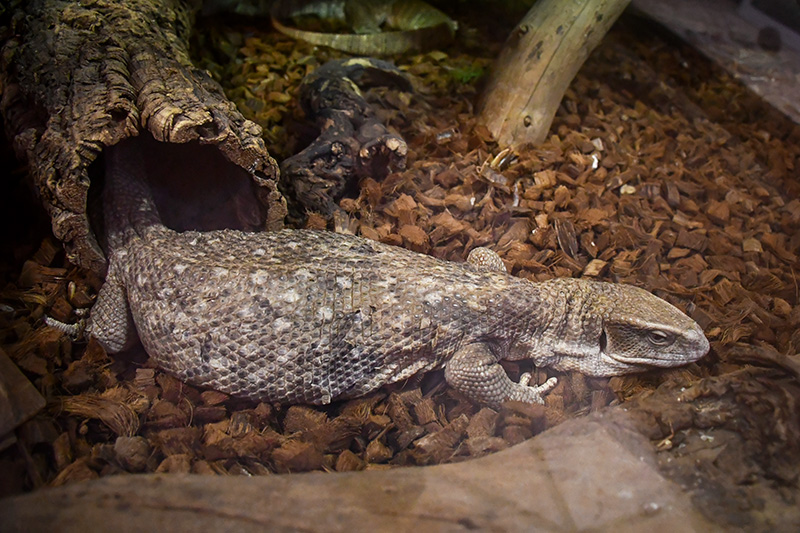
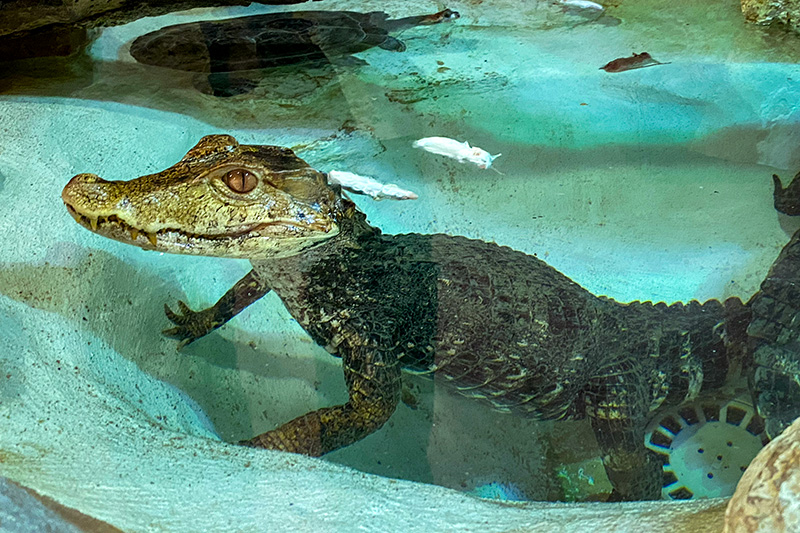
Practical information
Some practical information to help you plan your visit:
Opening times and charges
The park is open:
- from 10 am to 6 pm every day
- 9 am to 7 p.m. in July and August
- from 10 am to 5.30 pm from November to February
Prices 2024: €21 per adult, €15 per child (aged 3 to 12).
Free parking is available on the D572 between Pélissanne and Saint-Cannat.
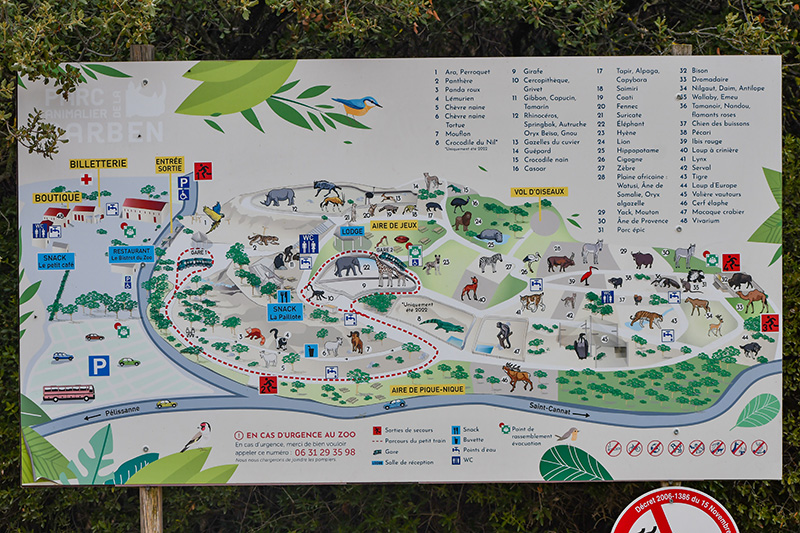
Catering areas
La Barben Zoo has a number of restaurants, including the "Bistrot du Parc" at the entrance, "La Paillotte" in the heart of the park (not far from the gibbons), "Le Petit Café" near the vivarium and "Le Café Nomade" next to the goats.
The zoo also offers several picnic areas, some of which are sheltered in case of rain.
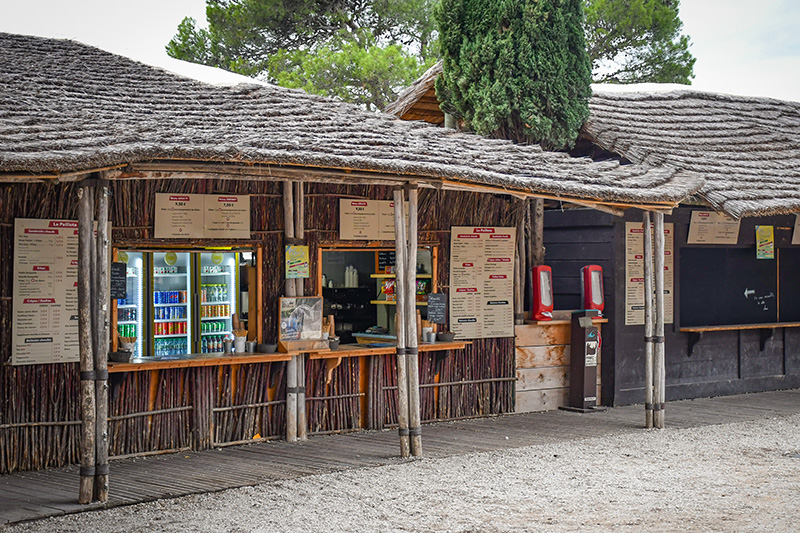
one of the restaurant areas
The little Train
The Little Train provides a shuttle service between the entrance and the centre of the park. It runs every day during zone B school holidays and only on Saturdays, Sundays and public holidays outside school holidays. Fare: €1 per person per journey.
An exciting playground for kids
The playground is superbly laid out, with climbing structures, large slides, swings, zip lines, balance courses and games for the little ones.

part of the playground
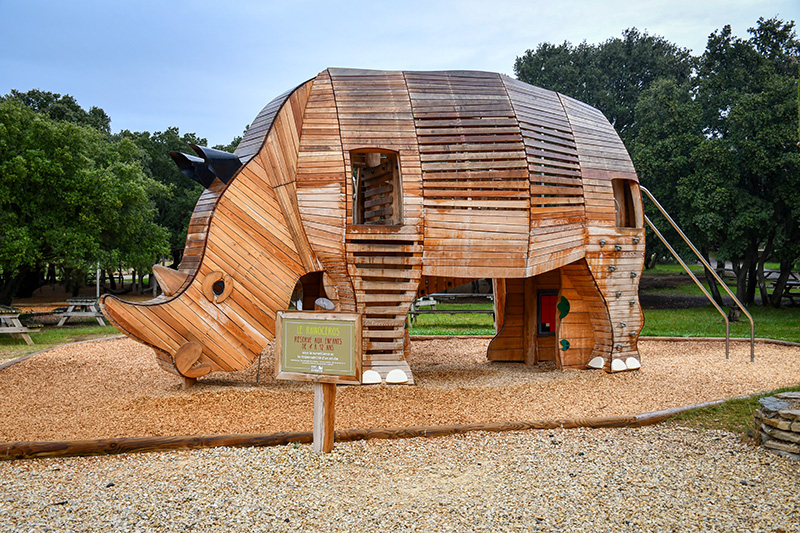
the rhino
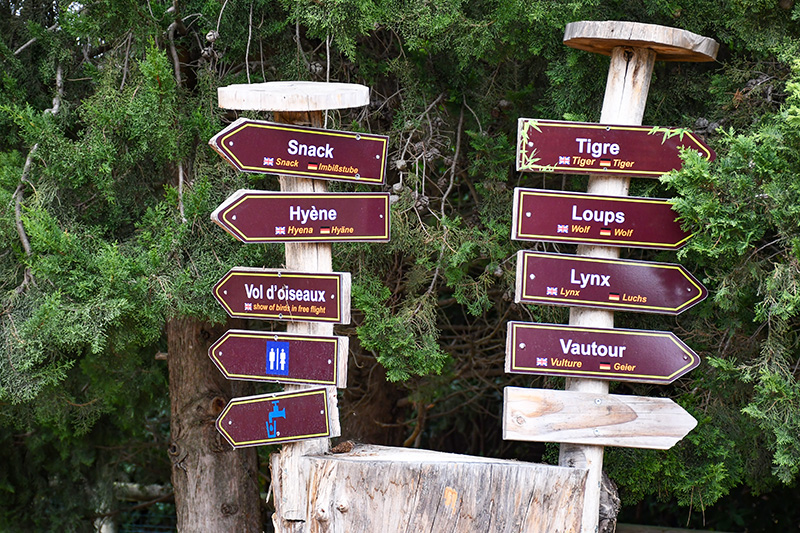
View of the castle
From the rhinoceros enclosure, you can see the castle of La Barben, the current site of the Rocher Mistral.
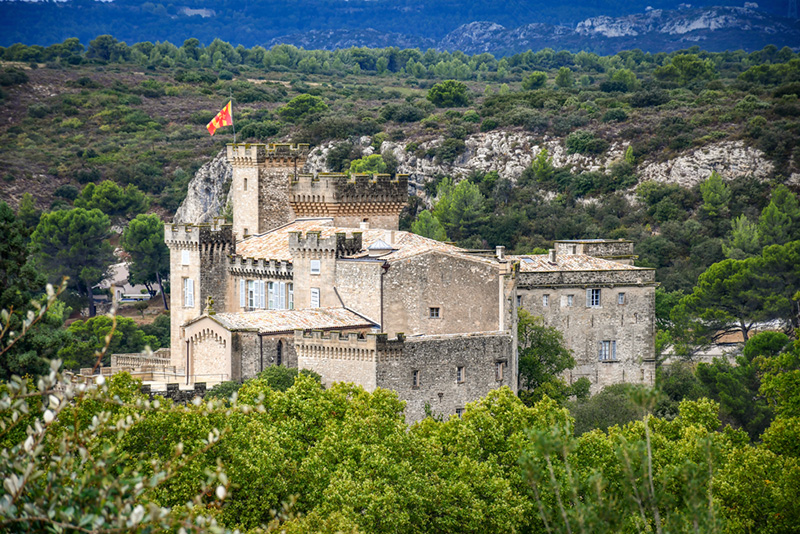
A typically Provençal natural area
We're very sensitive to the natural environment and we really enjoyed La Barben, which is typical of the Mediterranean region, with its holm oaks and pine trees. Not being from the region, it was a real change of scenery for us!
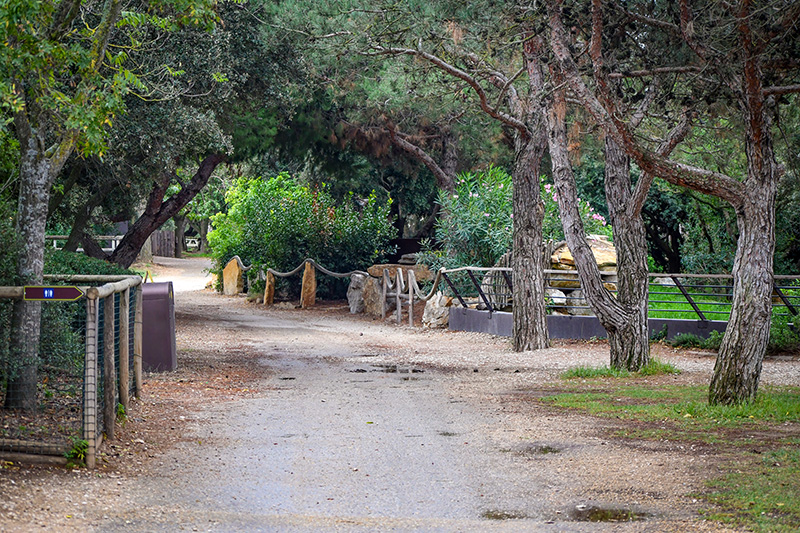
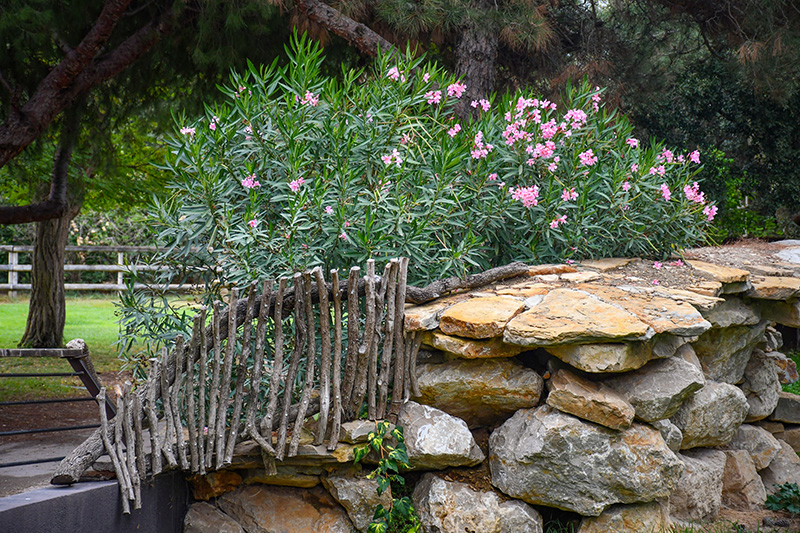
The 33-hectare park extends over an oak forest overlooking the Salon region and the Lambesc garrigues. The natural area has been classified as Natura 2000 and is renowned for the richness and specificity of its biodiversity.

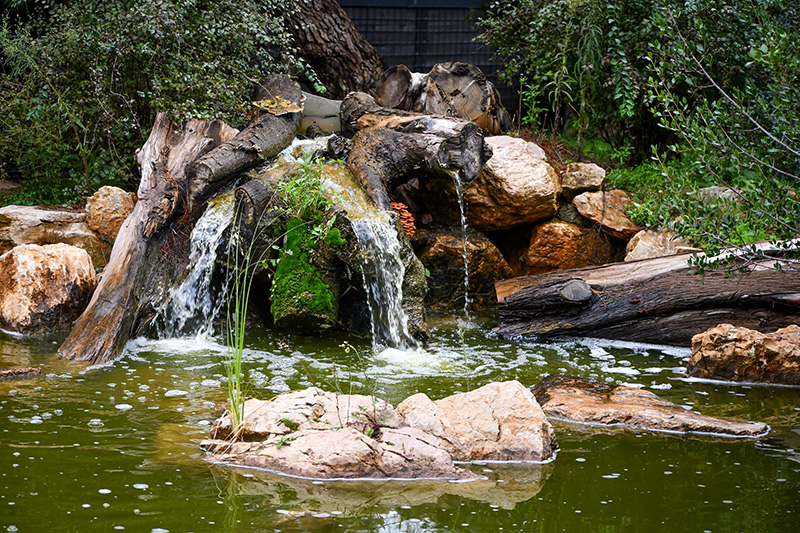
Where to stay in the Salon-de-Provence region?
To find accommodation in the area, I recommend the Salon-de-Provence region. Click here for a list of accommodations or browse the map below:
Like it? Share it!
Did you enjoy the reading? If so, please share this article on Facebook or X (formerly Twitter) and pin these images on Pinterest:
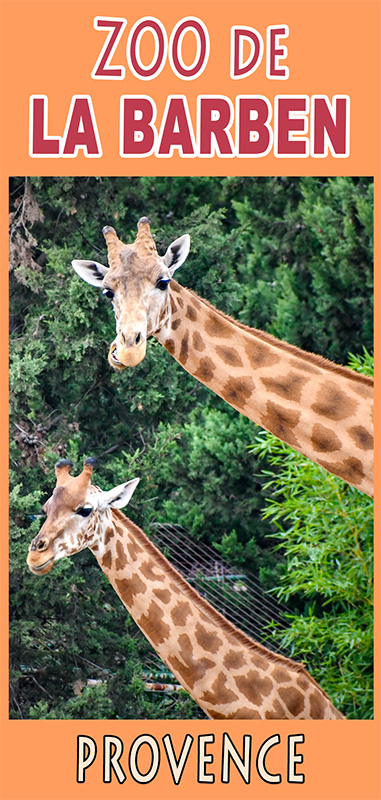

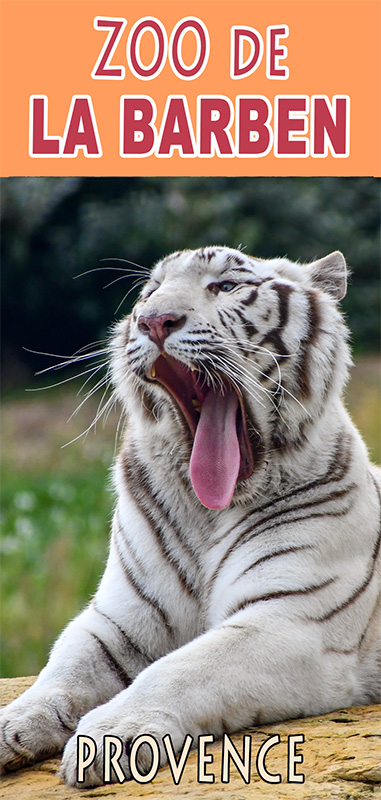
A big THANK YOU to La Barben Zoo for their warm welcome! The morning rain only added to the charm of this memorable day, enhanced by the discovery of the animals and the beauty of the park. A wonderful experience that we are not likely to forget!
All photos © French Moments

